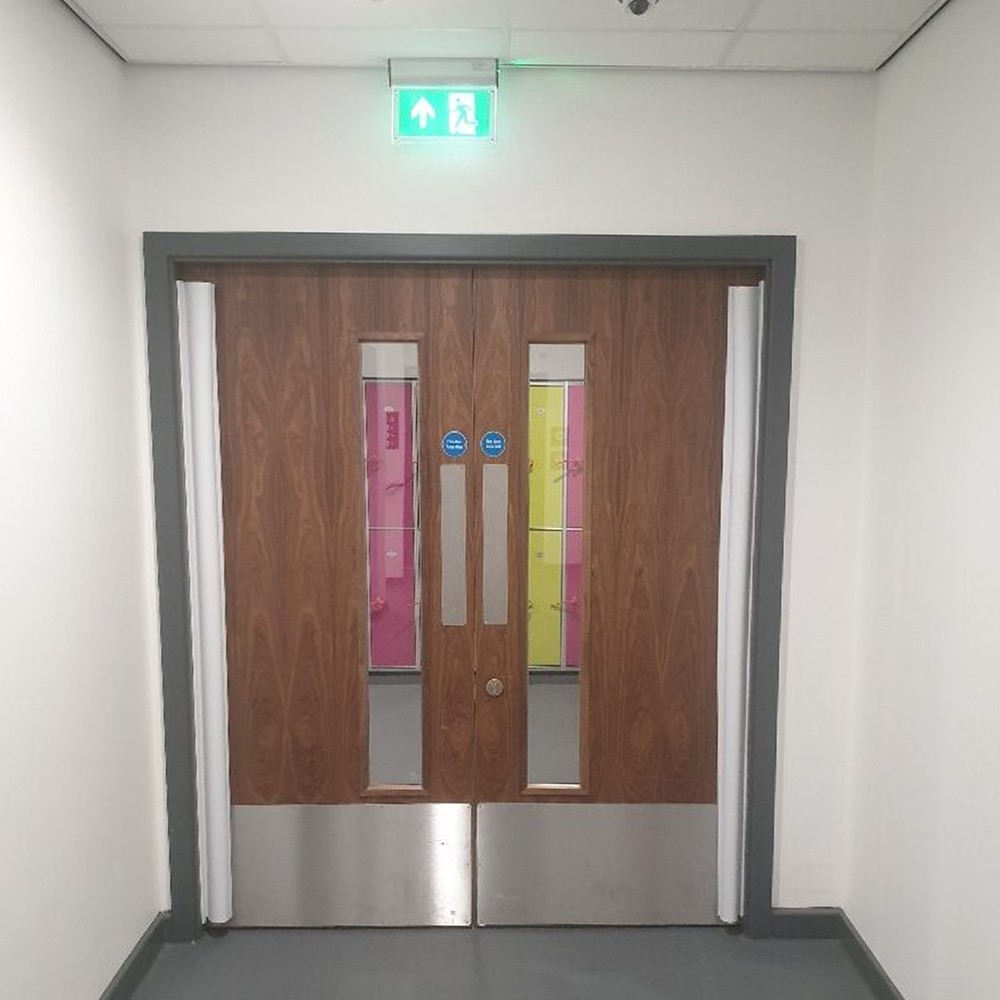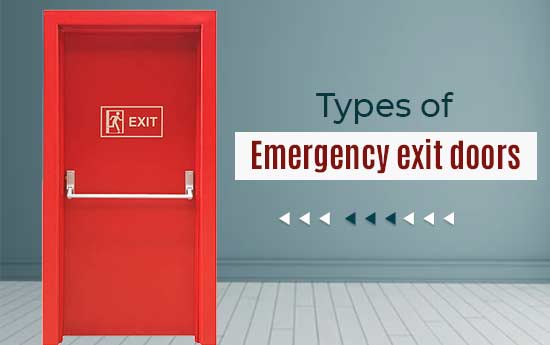Exactly How Fire Doors Can Assist Stop the Spread of Fire in Commercial Structures
Exactly How Fire Doors Can Assist Stop the Spread of Fire in Commercial Structures
Blog Article
Comprehending the Different Kinds Of Fire Doors for Boosted Safety
In the realm of structure security, comprehending the different sorts of fire doors is vital. These specialized doors not just function as obstacles versus fire and smoke yet likewise play an essential function in making sure safe discharge during emergencies. From typical fire-rated doors that protect against fires to acoustic fire doors that use both fire resistance and sound insulation, each type is created with particular functions in mind. The assimilation of glass fire doors and the requirement of fire escape doors even more highlight the diverse nature of fire door applications. What important facets must center supervisors think about to make best use of the effectiveness of these lifesaving barriers?
Requirement Fire-Rated Doors
Standard fire-rated doors are a vital part in making sure structure safety and conformity with fire laws. These doors are specifically developed to stand up to the spread of fire and smoke, offering crucial protection to occupants and building. Built from materials such as steel, plaster, and fire-resistant wood, they can withstand heats and keep architectural honesty for differing durations, commonly ranging from 20 mins to three hours.
The efficiency of common fire-rated doors is measured by their fire-resistance score, which is established via rigorous testing under controlled problems. This ranking indicates the period during which the door can contain fires and warmth, consequently enabling added time for evacuation and emergency situation action. Furthermore, these doors usually include intumescent seals that expand when revealed to heat, further avoiding the flow of smoke and harmful gases.
Setup of basic fire-rated doors should comply with rigid structure codes and requirements, such as those established by the National Fire Protection Association (NFPA) and the International Structure Code (IBC) Regular inspections and upkeep are necessary to make certain that these doors function properly in an emergency. Effectively installed and kept fire-rated doors are vital in enhancing general building safety and security and reducing fire-related dangers.
Smoke Doors
Smoke doors play a pivotal function in fire safety by especially resolving the containment of smoke, which is commonly much more harmful than fires throughout a fire event. Smoke breathing can bring about extreme respiratory system issues, disorientation, and also fatalities, making smoke doors an essential element in emergency situation preparation. These doors are developed to restrict the movement of smoke between different areas within a building, consequently giving safer emptying courses and minimizing potential damages to property.

Moreover, smoke doors are often equipped with automatic closing systems, caused by smoke alarm or smoke alarm, to guarantee they close promptly during an emergency. By including smoke, these doors help maintain lower temperatures and clearer visibility in escape paths, wikipedia reference making them a crucial element in thorough fire security techniques. Their proper setup and maintenance are important to make certain optimum efficiency when most required.
Acoustic Fire Doors
Acoustic fire doors offer a dual feature in both fire safety and security and audio attenuation, making them a valuable addition to structures where sound control is important. These doors are engineered to not just meet strenuous fire resistance requirements yet likewise to substantially decrease audio transmission, thus improving total structure efficiency.
The building of acoustic fire doors commonly includes a more helpful hints combination of dense products and specialized seals. These elements work together to produce an effective obstacle versus both fire and noise. High-density cores, such as mineral boards or composite products, are frequently utilized in the door fallen leave to optimize audio insulation. Furthermore, the door frame and seals are created to maintain acoustic integrity while using robust fire resistance.
Acoustic fire doors are specifically helpful in environments where personal privacy and peaceful are critical, such as health centers, hotels, and academic establishments. They aid to preserve a serene ambience by decreasing the transmission of sound between rooms or hallways while guaranteeing conformity with fire safety and security policies. Along with their practical advantages, these doors can be customized to mix flawlessly with the building appearances of a structure, guaranteeing that security does not come with the expense of layout.

Glass Fire Doors
Glass fire doors, frequently used in modern building designs, provide a blend of openness and safety that standard fire doors can not match. These doors combine the visual appeal of glass with vital fire-resistant residential properties, making them a perfect choice for contemporary structures. Engineered with specialized fireproof glazing, glass fire doors can withstand heats and avoid the spread of flames and smoke for a defined period, normally ranging from 30 to 120 minutes.
The building of glass fire doors includes several layers of solidified glass, often treated with intumescent materials that broaden when subjected to heat, further enhancing their fire-resistant abilities. These doors are not just functional in terms of fire security yet additionally enable natural light to permeate through spaces, adding to power efficiency and a more welcoming atmosphere.
In addition, glass fire doors can be incorporated with numerous framework materials such as steel or aluminum, which provide additional structural support and longevity. Making use of such doors is especially beneficial in industrial, academic, and medical care setups where visibility and security are vital. By meeting rigorous fire safety regulations and preserving an open, modern aesthetic, glass fire doors represent an essential development in fire-resistant construction.

Fire Escape Doors
Fire leave doors are an important component of any kind of structure's security infrastructure, created to offer a swift and protected means of egress during emergencies. These doors are purposefully located discover here to make sure residents can quickly and securely leave the facilities in case of a fire or various other harmful scenarios. Unlike typical doors, fire leave doors have to adhere to strict regulatory requirements, ensuring they can execute dependably under duress.
A vital attribute of fire escape doors is their ability to open up quickly from the inside, commonly geared up with panic bars or press pads. This style facilitates quick discharge and avoids traffic jams that can happen during high-stress scenarios. In addition, fire leave doors are frequently constructed from fireproof materials to stop the spread of fires and smoke, thereby providing vital extra time for evacuation and firefighting efforts.
An additional crucial facet is the clear signage and lighting connected with fire departure doors. Ultimately, the efficiency of fire exit doors is a crucial aspect in protecting lives and minimizing residential property damages during emergency situations.
Verdict
In recap, recognizing the different types of fire doors, consisting of basic fire-rated doors, smoke doors, acoustic fire doors, glass fire doors, and fire escape doors, is crucial for improving safety and security in structures. Each kind offers certain benefits, from fire and smoke containment to seem insulation and visual combination, making certain extensive defense. Fire doors. Normal maintenance and compliance with safety and security standards are important to guarantee their efficiency in protecting passengers and promoting safe evacuation throughout emergencies
Report this page